So many people regard the Cochin breed as one of the biggest and most beautiful breeds of chickens. It remains undisputed that Cochins are very fluffy birds, and we recommend raising these chickens if you can.
To help you raise Cochins with ease and confidence, we have covered everything that you need to know about the birds. Continue reading to find out all you should know about the Cochin chicken breed.
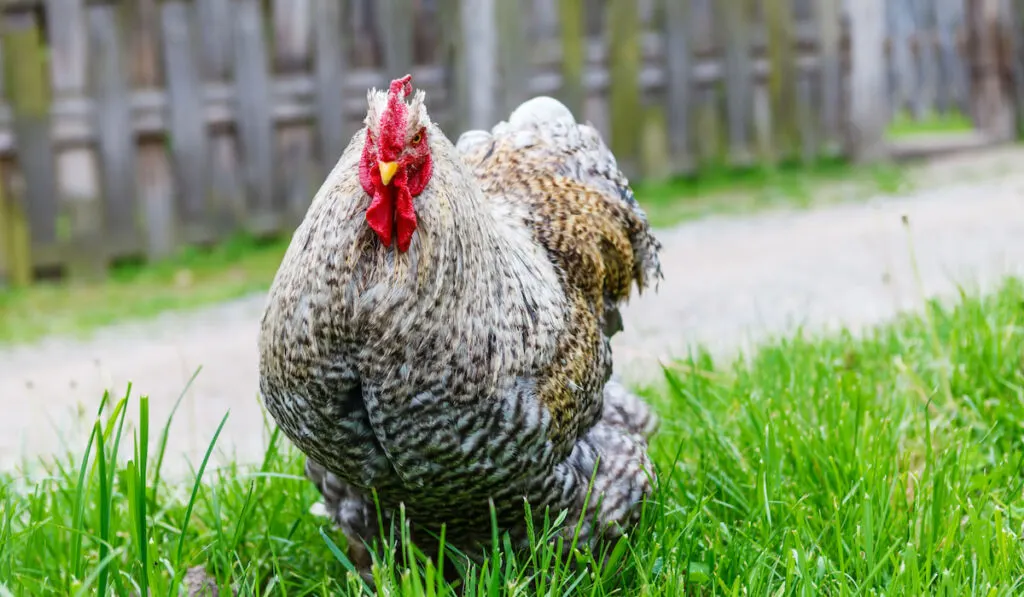
Table of Contents
History and Origin
Like many other types of chickens, the Cochin chicken originated in China.
They come from the Shanghai province. The birds have been popular since 1840 and they were recognized by the American Poultry Association in 1874.
“Hen Fever” which occurred in the mid-1800 was a craze in which many people rushed to get the most beautiful birds. Their top choices at the time were the Cochin and Brahma chickens.
Due to the popularity of the breed, Cochins were developed further in the USA, giving them a more aesthetic appeal.
Varieties
Across the world, especially in America, we have created different varieties of Cochin chicken. The most distinguishing feature of each variety is its color. However, their size also differs.
Some common varieties that are recognized by the American Poultry Association are:
- Black
- Partridge
- Buff
- White
- Brown
- Barred
- Blue
- Silver Laced
- Golden Laced
There are even more varieties, especially within the bantam (dwarf) forms.
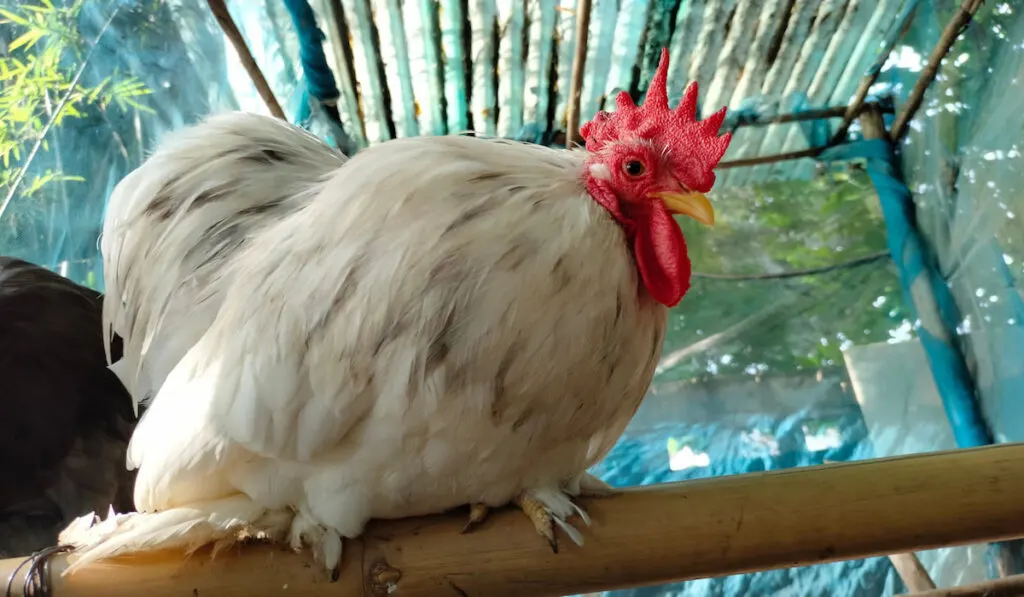
Characteristics
The easiest ways to identify Cochins are by their size and fluffiness.
Cochins are very fluffy birds that have thick feathers and a single comb.
Even though they are covered in a lot of feathers, note that their plumage develops quite slowly.
Size
Standard Cochin roosters can grow up to 21 inches tall while hens can grow up to 15-16 inches in height.
As for their weight, here’s how much Cochins weigh according to the type:
- Cock: 11 lbs (5 kg)
- Hen: 8.5 lbs (3.8 kg)
- Pullet: 7 lbs (3.1 kg)
- Cockerel: 9 lbs (4 kg)
As for bantam (dwarf) Cochins, they weigh 1.8-2 lbs (0.8-0.9 kg) so long as they are well-fed.
Color
The color of Cochins depends on the variety. The variety also determines the color of the beak, as the Cochin beak can be yellow to black.
What is common across every variety is the skin, wattle, and legs. Cochins have yellow skin and legs accompanied by red wattles.
Eggs
The Cochin chicken is desired not only for its visual appeal but also for its egg-laying capabilities. The eggs are brown, which is desirable across Europe and Asia, hence the popularity of the breed.
Cochins lay 150-180 medium to large-sized eggs per year.
Something extra special about this breed is that it lays eggs in winter without much effort from you, so if you want a steady supply of eggs, this is the breed for you.
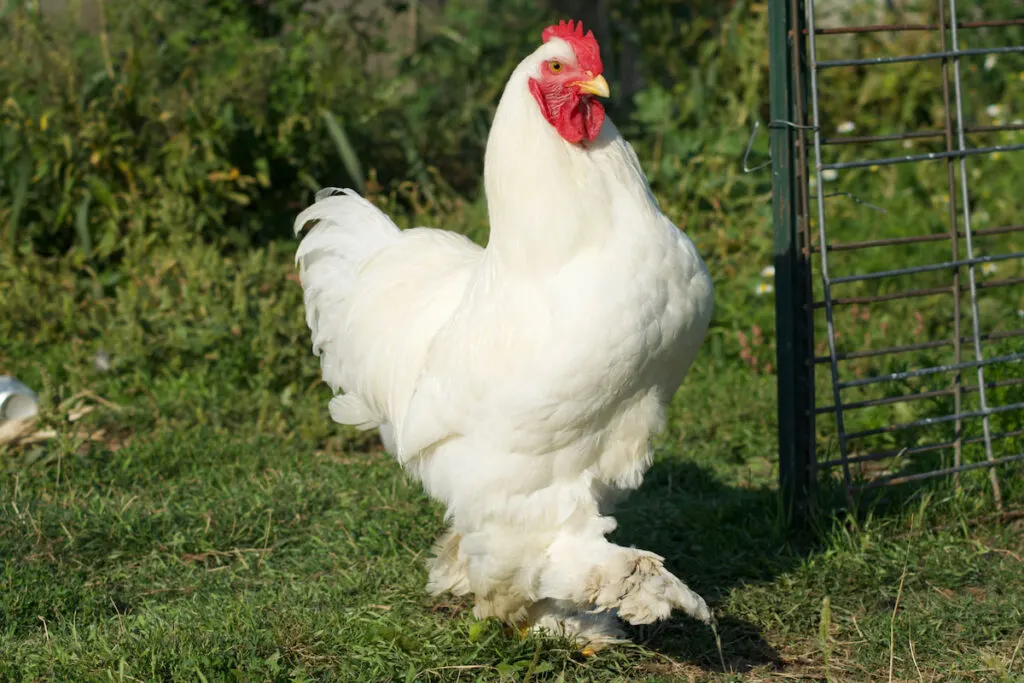
Lifespan
Cochin chickens can live 8-10 years so long as their growing conditions are optimal.
So long as they are well-fed and kept in comfortable coops or sleeping areas, you will be able to keep your chickens for a long time.
Regular vet checkups and vaccination also affect the lifespan of Cochins, so you want to give your birds optimal veterinary care.
Sexing
You’ll easily distinguish between mature male from female adult Cochins, as the males stand taller and more dominant than the females. However, it is not very easy to identify the sex of Cochin chicks.
Male Cochins (roosters) start growing their combs about three weeks after they hatch.
Carefully observe your three to four weeks old chicks and check for signs of a pink comb. Also, males have a more confident stance, and you should start noticing this from week four to six after they hatch.
Behavior and Temperament
One would expect that this large breed will be hostile or aggressive. This isn’t the case, because Cochins are docile, friendly, motherly, and calm.
They will quickly run away from danger, but if you can raise them to be comfortable around you, they will allow you to lift them and pet them.
Like other chickens, Cochins may disturb your yard because of their noise. However, they are relatively quiet, especially if their needs are met and there is no sign of a predator nearby.
Uses
In the United States, the most common use of this magnificent breed is as an ornamental or show breed. However, it is also raised for meat and sometimes egg production.
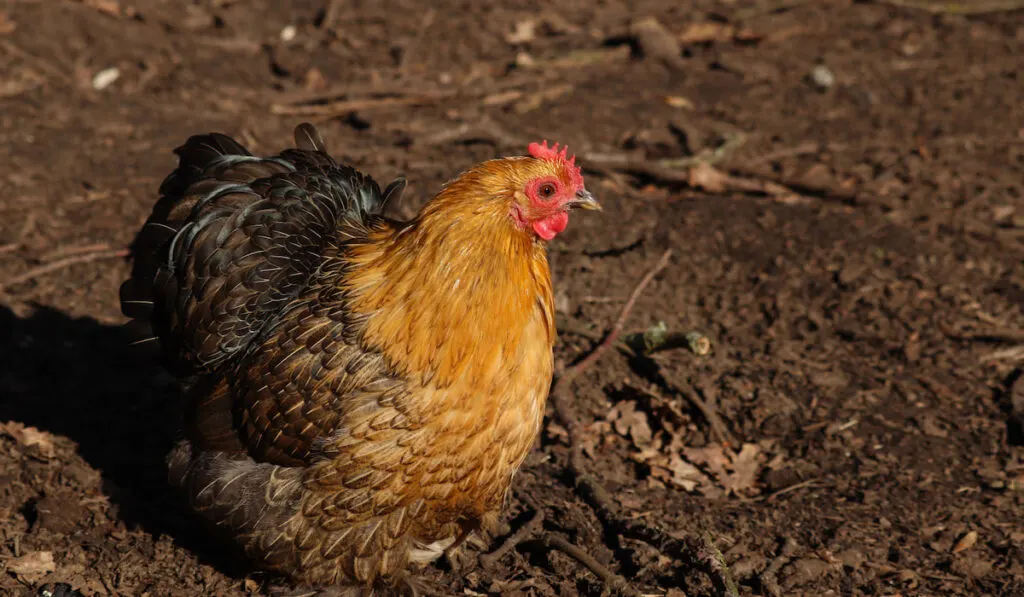
This is a multiple-purpose chicken that you’d love to raise, especially in the winter months.
Ornamental and Show Chickens
Of course, a magnificent breed such as this should display its beauty in chicken shows and events.
In the United States, Cochins are mostly used as pets, as ornamental birds, or for shows.
As a show bird, the most desirable feature of Cochins is their size, color, and fluffiness.
This means that they are mostly prized for their weight, beauty, and amount of feathers that they’ve grown.
Meat Production
Cochins are beautiful and they also produce delectable meat.
People raising Cochin chickens for meat usually harvest the chickens 15-16 months after hatching.
Cochin meat is soft and easy to chew. Like other chickens, it is sweet and enhances the taste of your soups and stews.
Winter Eggs
Cochins lay large eggs, and this is a desirable feature, especially for cooks and bakeries. Apart from that, they also lay eggs in winter. Awesome, right?
Cochin chickens are well-insulated, so the cold of winter does not stop them from laying eggs as it does other birds.
So long as you continue to feed them well and their coop is well-insulated, they will give you a lot of eggs in winter.
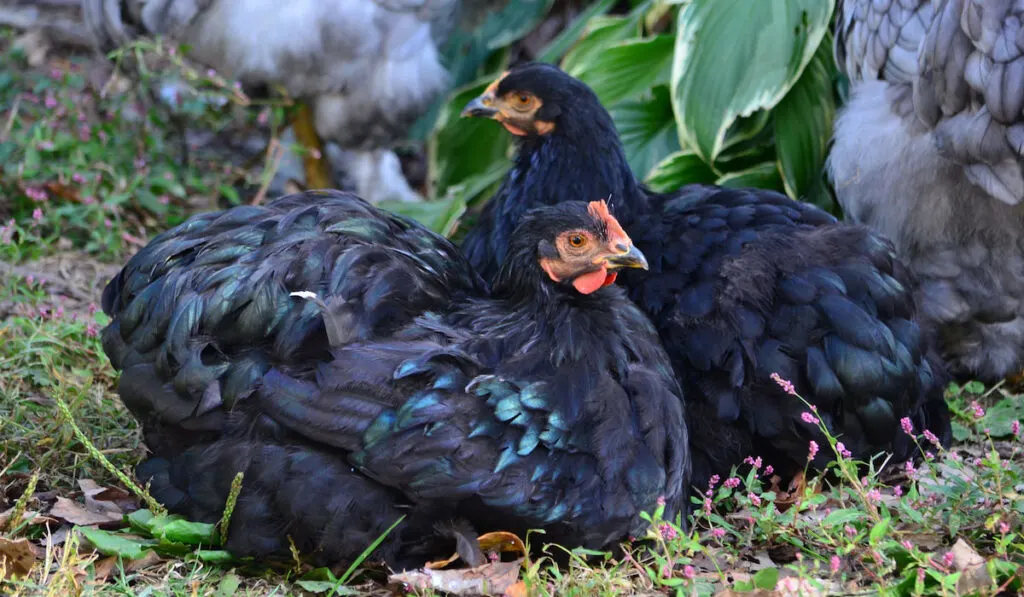
Hatching and Raising
Cochins may be very large and beautiful, but their care requirements are rather minimal. So long as you can get their housing right and incubate their eggs the right way, you’ll have almost nothing to worry about.
Your major goal when raising Cochins is to keep the birds clean, dry, and well-fed.
Incubation and Hatching
Cochins lay medium to large eggs, so make sure that your incubator can accommodate the size of their eggs. However, you do not need an incubator if you have a Cochin mom, as Cochin feathers help to insulate both the mother and her eggs.
When the eggs hatch, make sure that the chicks have a steady supply of feed and water. You can raise them yourself (in a brooder box) if you want them to grow quickly, as you will feed them intensively.
However, you can leave the chicks with their mom. Just make sure that they have a safe place to roam in and do not run out of food to eat and clean water to drink.
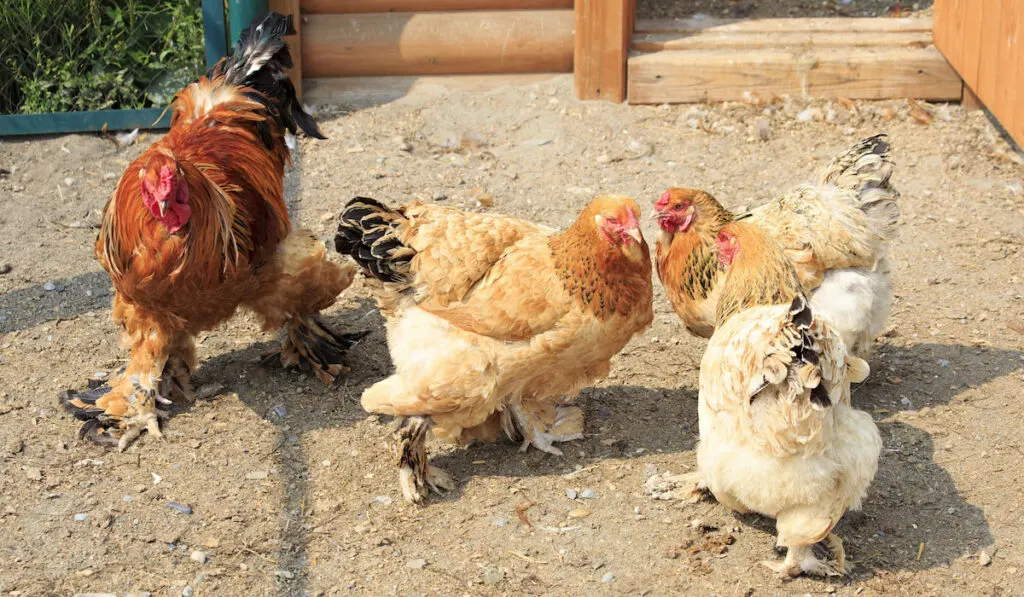
Housing
A standard coop for Cochin chickens should be at least 4 feet by 4 feet for each bird.
Ensure that the coop has a lot of space, as Cochins can easily overheat and pant because of heat.
When building a coop for your birds, you should prioritize ventilation over insulation. However, insulating the coop is also important, especially during the winter months.
You should keep the coop dry, since a dry area is important because the shank feathers collect a lot of dirt when they are wet.
Unlike many other chickens, Cochins will not attempt to jump or fly out of your yard, so you do not need to build a very tall fence.
All you need to worry about when raising these birds is how to keep them cool.
Feeding
If you love the size of your Cochins, you need to feed them properly. Make sure that they are well-fed and eat quality feed. Some feed ideas for your Cochins are:
- Formulated feed: Cochin feed should have around 19-22% crude protein. Formulated feed has just that amount. This type of feed may also be medicinal and help to prevent some diseases from attacking your birds.
- Seeds: Seeds like papayas, sunflowers, chia, etc. are rich in proteins, fats, minerals, and other nutrients. Also, give your chickens some grains like barley.
- Insect treats: If you want your Cochins to love you and always run toward you, give them insect treats such as mealworms.
- Fruits: Fruits are rich sources of sugars and vitamins. However, give fruits to your Cochins only as treats.
- Vegetables: You can give as many vegetables as you can to your Cochins. Just make sure that other high-protein feeds are also readily available.
Some feeding tips for Cochins are:
- Make sure that their water source is clean and steady.
- Turn on the light at night so that they can continue eating.
- Give them protein and calcium supplements (if need be) so that they can continue laying eggs.
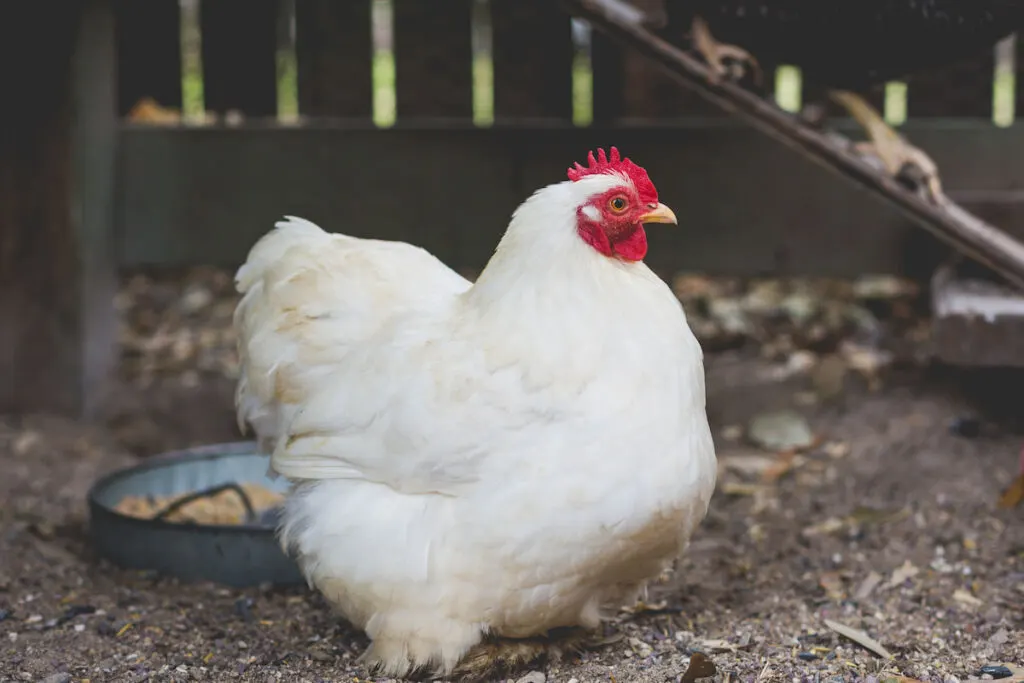
Winter Care
Cochins are hardy in winter, as they are well protected because of their feathers. However, you still need to care for them as winter approaches. Some winter care tips for Cochins are:
- Steady feeding: Increase their grain diet because grains can keep them warm. Also, make sure that they get feeds rich in calcium and proteins so that they can continue laying eggs.
- Heat lamp: If there’s no heat lamp in the coop, install some. Heat lamps can help you to regulate the temperature of the coop.
- Bedding: The body of your bird is covered in feathers. However, the feet are exposed. You can protect the feet of your birds from the cold ground by placing a layer of bedding on the floor.
Be attentive to your birds in winter. Even if they can go out, make sure that they do not stay out for long.
Final Thoughts
Cochins are truly large and beautiful birds. Go watch the beautiful Cochins in your yard and feel proud of yourself. So long as you make use of the tips in this article, you will raise beautiful and healthy birds.
Resources
- https://breeds.okstate.edu/poultry/chickens/Cochin-chickens.html
- https://www.backyardchickencoops.com.au/blogs/learning-centre/breed-profile-Cochin
- https://www.thehappychickencoop.com/Cochin-chickens/
- https://livestockconservancy.org/heritage-breeds/heritage-breeds-list/Cochin-chicken/
- https://backyardpoultry.iamcountryside.com/chickens-101/Cochin-chicken/
